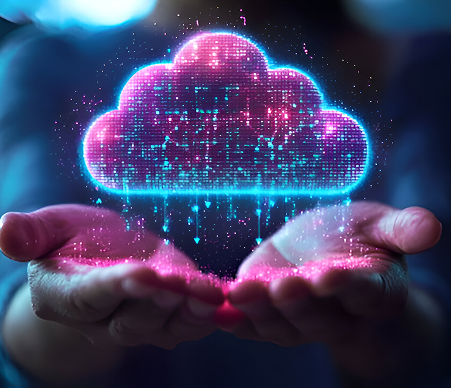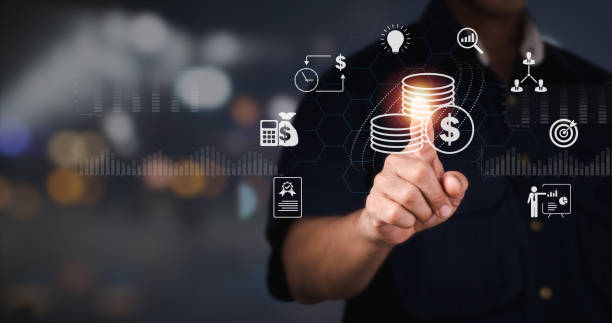
by Sophia Riley | Jan 8, 2026 | Automation, Invoice Delivery
Invoice processing is often the slowest part of the payables process—especially in organizations juggling high volumes, manual checks, and complex approval chains. When left unaddressed, those friction points lead to costly delays, missed discounts, and weak audit trails.
Yet many of the tools needed to fix these issues already exist within Oracle Cloud and leading AP platforms. By better leveraging smart invoice capture and rules-based approval workflows, teams can significantly reduce time-to-approval while maintaining rigorous oversight, auditability, and policy compliance.
Why Invoices Stall—And Why That’s a Problem
In most organizations, AP bottlenecks aren’t caused by a single issue, but rather a stack of inefficiencies:
- Incomplete or inaccurate invoice data
- Unstructured submission methods (e.g., email attachments, physical mail)
- Unclear or inconsistent routing logic
- Manual validation against POs or contracts
- Inadequate tracking of approval status
These friction points lead to real financial and operational consequences:
- Lost early payment discounts
- Duplicate or erroneous payments
- Compliance risks and audit exposure
- Poor vendor experience and strained relationships
When these issues scale across hundreds or thousands of monthly invoices, they erode not just efficiency—but trust in the system.
Smarter Capture = Cleaner Data from the Start
Traditional OCR scanning has evolved. Oracle-native and integrated AP platforms now use intelligent data capture tools that do more than extract information. They:
- Identify and extract key fields (vendor name, PO number, line items, totals)
- Validate vendor credentials and payment terms in real time
- Apply historical GL coding logic for accuracy
- Match invoices to existing purchase orders or receipts
- Flag inconsistencies or duplicates before the invoice enters approval
This “pre-screening” dramatically reduces manual entry and review. Approvers receive cleaner, categorized, and context-rich invoices—minimizing rework and accelerating approvals.
Rules-Based Workflows That Reduce Lag Without Losing Control
The true power of AP automation lies in its routing logic. With customizable workflows, organizations can automate invoice approvals based on:
- Invoice amount thresholds
- Cost center, department, or business unit
- Project or PO association
- Vendor status (e.g., new, preferred, or flagged)
These rules can be configured to:
- Route invoices to multiple approvers in parallel or sequence
- Escalate automatically if an invoice isn’t addressed within a set timeframe
- Pause and flag invoices that violate spend policies or lack necessary documentation
- Log every action for audit purposes, ensuring traceability
Most importantly, these workflows are configurable by business users, not just IT. That gives AP and finance teams direct control to update policies as spend patterns, vendors, or org structures change.
Built-In Fraud and Policy Violation Detection
Beyond efficiency, automation strengthens financial controls. Real-time validation helps detect and isolate issues that could otherwise go unnoticed:
- Invoices submitted from unregistered or blacklisted vendors
- Amounts exceeding budget thresholds without explanation
- Mismatches between invoice totals and PO values
- Spend in unapproved categories or outside contract terms
Rather than relying on end-stage human review, these checks happen upfront—reducing the risk of payment errors and compliance gaps.
Improved Vendor Experience with Less Operational Overhead
Automation also benefits the vendor side of the equation. Supplier portals and self-service tools integrated with Oracle enable vendors to:
- Upload invoices directly into the AP system
- Monitor payment status and expected timelines
- Edit or resubmit rejected invoices with guided resolution steps
This reduces back-and-forth emails, improves transparency, and shortens resolution timeframes—creating smoother vendor relationships and lightening the load on internal AP support teams.
Case in Point: Quantifiable Results from Streamlined AP
Enterprises that optimize their AP process with smart capture and dynamic workflows report:
- Reduction in invoice cycle time by 40–60%
- Significant decrease in payment errors and rework
- Higher on-time payment rates
- Improved audit outcomes with cleaner approval logs
- Greater internal satisfaction from business units and finance stakeholders
What’s notable is that these results don’t require ripping and replacing systems. They’re achieved by expanding use of the automation capabilities already built into Oracle—and tuning them to the needs of the business.
Where oAppsNET Adds Value
oAppsNET partners with enterprise AP and finance teams to build, refine, and optimize these Oracle-native processes. From configuring intelligent capture to mapping conditional workflows and building vendor self-service functionality, we help you get more from the systems you already own.
Our approach is practical and scalable: streamline what matters, eliminate what doesn’t, and maintain full compliance every step of the way.

by Sophia Riley | Jan 6, 2026 | Oracle Cloud Applications, Oracle Content Management System
For Oracle customers, databases sit at the core of every financial process, application, and report. But while the stability and scalability of Oracle systems are widely acknowledged, those strengths often create a false sense of security. Too often, organizations assume their database environment will continue to “just work”—until it doesn’t.
Behind every high-performing ERP system is a team of skilled administrators keeping it tuned, patched, monitored, and optimized. Yet many internal IT teams are already stretched thin, leaving gaps in critical areas such as performance tuning, backup and recovery, patch management, and uptime assurance.
That’s where a dedicated database administration (DBA) partner proves indispensable.
The Reality: Overburdened IT, Under-Optimized Systems
In-house IT teams supporting Oracle environments are often juggling competing priorities: helpdesk tickets, infrastructure maintenance, cloud migration planning, security audits, user provisioning—the list goes on. Within that context, database administration tasks are either deprioritized or handled reactively.
This reactive posture can lead to:
- Unnoticed performance degradation over time
- Delays in applying security patches or firmware updates
- Risky backup routines or incomplete disaster recovery strategies
- Reduced application performance due to suboptimal queries or poor indexing
- Extended downtime during migrations or upgrades
ERP systems, especially Oracle EBS or Oracle Cloud Financials, are too mission-critical for these tasks to fall by the wayside. And yet, without a DBA partner, that’s exactly what happens in many organizations.
What You’re Missing Without a DBA Partner
Whether your environment is fully on-premises, hybrid, or moving to the cloud, a dedicated DBA partner helps ensure the systems that power your business stay optimized, protected, and agile. Here’s what you’re likely missing if you’re relying solely on internal support.
1. Proactive Performance Tuning
Database tuning isn’t a one-time exercise—it’s a continuous process that evolves as data volumes grow, new applications are deployed, and user behaviors change. A DBA partner brings the experience and tools to:
- Monitor query performance and system load patterns
- Identify inefficient SQL statements
- Optimize indexing and caching strategies
- Tune database parameters for specific workloads
- Recommend structural changes for long-term scalability
Without this expertise, performance issues build slowly until they cause major business disruptions—often during peak periods like quarter-end close or major reporting cycles.
2. Uptime and Disaster Recovery Confidence
Your ERP system can’t afford prolonged downtime. But too many organizations rely on legacy backup strategies, outdated documentation, or unclear roles when a failure occurs.
A DBA partner ensures:
- Frequent and validated backups (full, incremental, logical)
- Clear recovery time objectives (RTOs) and recovery point objectives (RPOs)
- Periodic testing of backup and restore procedures
- Failover configurations for high availability and business continuity
This translates into confidence that, if disaster strikes—whether due to hardware failure, cyberattack, or human error—you can recover without catastrophic data loss.
3. Risk Reduction Through Consistent Patching and Compliance
Oracle frequently releases patches for security vulnerabilities, performance improvements, and new features. However, staying current across test, dev, and production environments is resource-intensive. Many teams fall behind, exposing themselves to unnecessary risk.
A DBA partner supports:
- Timely application of CPU (Critical Patch Updates) and PSU (Patch Set Updates)
- Controlled deployment and rollback procedures
- Regulatory compliance alignment for audits (SOX, GDPR, HIPAA, etc.)
- Patch testing in sandbox environments before production rollout
This reduces the likelihood of breaches, application instability, or compliance failures.
4. Support During Migrations, Upgrades, and Integrations
Oracle environments are constantly evolving—whether through version upgrades, expansion to new modules, or integration with external systems. These projects introduce significant complexity and risk if handled without the right DBA support.
A DBA partner plays a critical role by:
- Assisting with data mapping, cleansing, and transformation
- Performing pre-migration performance benchmarks
- Validating post-upgrade functionality
- Managing rollback procedures and failover paths
- Coordinating with app and infrastructure teams to reduce business disruption
Their involvement helps ensure your modernization efforts don’t break the systems your business depends on.
5. Ongoing Cost Optimization
Database inefficiencies aren’t just technical—they impact your bottom line. Poor indexing, unnecessary full table scans, bloated storage, and unused compute cycles can all drive up costs in both on-premises and cloud models.
DBA partners help clients:
- Monitor and reduce resource consumption
- Identify unused or over-provisioned environments
- Optimize licensing through smarter database usage
- Automate routine maintenance to reduce overhead
The result: cleaner systems, better performance, and reduced spend.
oAppsNET: Your DBA Extension—Not Just a Vendor
At oAppsNET, we act as an extension of your IT and ERP team—not just a support provider. Our DBA services cover the full lifecycle of your Oracle environment, including:
- 24×7 monitoring and issue resolution
- Backup and recovery planning and testing
- Performance tuning and capacity planning
- Upgrade support and patch management
- Security hardening and compliance alignment
- Cross-functional coordination with app, cloud, and infrastructure teams
Whether you’re running Oracle EBS, Oracle Cloud Financials, or a hybrid landscape, our team helps de-risk operations, optimize performance, and free up your internal teams to focus on strategic work.
Don’t Let the Database Be the Bottleneck
Your Oracle ERP investment is only as strong as the database it runs on. Without consistent oversight, tuning, and modernization, even the best-designed systems can falter. Partnering with a skilled DBA team provides assurance, agility, and long-term value—especially when internal capacity is limited.
If your Oracle environment is business-critical, so is your database — so is the team that manages it.

by Sophia Riley | Jan 1, 2026 | Accounts Payable, AP Automation
For organizations already using Oracle Accounts Payable (AP) Automation, the foundational benefits are well established: reduced manual processing, fewer late payments, and increased operational efficiency. But as AP departments mature, the opportunity isn’t just to maintain the automation status quo, but also to unlock more value from what’s already in place.
Today’s leading finance teams are looking beyond basic invoice digitization and payment processing. They’re leveraging underutilized Oracle features and strategic enhancements to boost throughput, improve data accuracy, tighten internal controls, and deepen supplier collaboration. Here’s how to get more from your AP automation investment.
1. Embracing Touchless Invoicing
Many AP teams still handle a high volume of partially automated invoices that require manual validation, exception handling, or approvals; resulting in bottlenecks, errors, and inconsistent processing times.
With Oracle Cloud Financials and the right configuration, organizations can move closer to touchless invoicing, where invoices are received, matched, approved, and scheduled for payment without human intervention. This is made possible through:
- Enhanced OCR (optical character recognition) and intelligent document recognition (IDR) to extract invoice data at scale.
- Automated three-way matching to POs and receipts, enabling straight-through processing.
- Auto-approval routing rules for low-risk or pre-approved transactions.
When properly implemented, touchless invoicing reduces average processing time from days to hours and significantly lowers the cost per invoice.
2. Expanding Use of Vendor Self-Service Portals
A major source of friction in AP is supplier communication—responding to invoice status inquiries, handling re-submissions, and resolving payment issues. Oracle’s integrated supplier portals offer a scalable solution that shifts many of these tasks to vendors, while enhancing transparency.
With the supplier portal, vendors can:
- Submit and track invoices directly
- Monitor payment statuses in real time
- Update banking and contact details securely
- Resolve discrepancies without involving AP staff
The result is not just time savings for your internal team, but also better supplier satisfaction and fewer duplicate or lost invoices.
3. Leveraging Dynamic Discounting
Many companies overlook a key financial lever within AP automation: dynamic discounting. Oracle Cloud offers the ability to automatically offer early-payment discounts to suppliers, based on real-time cash flow and approval status.
Dynamic discounting lets AP and treasury teams:
- Capture savings by accelerating payments when advantageous
- Improve supplier relationships through early payment options
- Drive ROI from AP automation beyond operational metrics
By embedding discount terms and triggers into the automation engine, finance leaders can create a programmatic way to turn AP into a strategic profit center.
4. Enhancing Audit and Control with Automation
Regulatory compliance and internal audits remain a major concern for finance teams. Oracle AP Automation provides built-in features that help enforce policy compliance without relying on manual oversight.
Advanced control capabilities include:
- Automated duplicate invoice detection
- Segregation of duties (SoD) enforcement in approval workflows
- Configurable validation rules to flag out-of-policy spend
- Audit trails for every touchpoint and system action
These controls not only reduce risk but also streamline audit readiness, cutting down the time and cost associated with compliance reviews.
5. Using Analytics to Optimize Performance
Oracle provides detailed reporting capabilities that many teams underutilize. Dashboards within Oracle Cloud Financials allow AP managers to track key performance indicators like:
- Invoice cycle times
- Exception rates
- Touchless processing percentage
- Supplier responsiveness
- Discount capture rates
By reviewing and acting on these insights regularly, organizations can identify breakdowns, monitor compliance, and benchmark AP performance across business units or time periods.
6. Integrating with Procurement for End-to-End Visibility
Full value of AP automation is only realized when connected with procurement and contract systems. Oracle supports integration with purchasing, vendor management, and expense modules—giving finance teams a complete view of the source-to-pay lifecycle.
This enables better spend forecasting, contract enforcement, and vendor performance tracking all within the same environment.
Partnering with oAppsNET for Advanced Oracle AP Optimization
At oAppsNET, we specialize in helping enterprise finance teams implement AP automation and optimize it for long-term impact. Our consultants bring deep Oracle expertise to uncover hidden opportunities for configuration, reporting, and workflow enhancement across your environment.
Whether you’re looking to enable true touchless processing, increase supplier adoption, or expand dynamic discounting programs, oAppsNET can help you get there quickly and cost-effectively.
Learn more about how we can support your AP automation journey by contacting us today.

by Sophia Riley | Dec 23, 2025 | Oracle Cloud Applications, Oracle Content Management System
Moving to a new ERP system or upgrading within an existing Oracle environment is a high-stakes initiative. Between legacy data, business-critical configurations, and compliance requirements, the success of a migration hinges on a single factor: data integrity.
Too often, data is treated as a one-time lift-and-shift exercise, resulting in inconsistent reports, broken workflows, and downstream errors that take weeks (or months) to unwind. Ensuring clean, validated, and traceable data throughout every phase of migration before, during, and after is what separates seamless transitions from disruptive ones.
Why Data Integrity Is the Critical Migration Risk
Even in the most well-planned Oracle migration projects, data is a persistent source of complexity. Here’s why:
- Legacy system inconsistencies: Source systems may contain outdated, duplicated, or orphaned data. Without proper cleansing, this gets inherited into the target system.
- Multiple data formats: Transactions, customer records, supplier records, and chart of accounts data may follow different conventions or structures across business units.
- Business rule misalignment: Data fields may not translate cleanly between Oracle EBS and Oracle Cloud modules without transformation logic or rule mapping.
- Time constraints: Tight go-live windows often leave little room for comprehensive data validation or iterative testing cycles.
For finance and IT leaders, the bottom line is clear: flawed data equals flawed reporting, broken controls, and potential audit exposure. Every effort to automate, optimize, or modernize ERP systems is undermined if the data foundation isn’t trusted.
Pre-Migration: Laying the Groundwork with Cleansing and Mapping
Strong data governance starts well before the first script is run. During the planning and assessment phase, the focus should be on establishing a clean, standardized, and clearly mapped dataset.
Key activities include:
- Data profiling and quality assessment: Identify anomalies, duplicates, null fields, and format inconsistencies across the source system.
- Business rule alignment: Engage finance and operations to validate how data should be mapped or transformed based on process logic—not just field matching.
- Retention policies: Archive obsolete or inactive records, such as old supplier accounts or inactive GL codes, to reduce clutter and improve performance.
- Data enrichment: Where applicable, supplement existing data with missing fields or updated values to align with Cloud-native requirements.
Migration Execution: Validating Data at Every Step
When the actual data migration begins—whether via ETL tools, integration scripts, or manual extracts—there must be controls in place to track data quality throughout the process.
Critical controls to implement:
- Pre-load validation reports: Use automated scripts to compare source and staging data for consistency and completeness before load.
- Trial conversions: Perform test runs of high-risk datasets (e.g., open payables, journal entries, supplier bank details) to catch mapping issues early.
- Reconciliation dashboards: Create real-time reports that flag mismatches, missing values, or transformation failures between source and target environments.
- Version-controlled scripts: All transformation logic, mapping sheets, and scripts should be tracked in a centralized repository with approval workflows.
This is where automation becomes invaluable, especially for repeatable validation across large datasets. oAppsNET frequently deploys regression testing scripts and data audit tools to reduce human error and ensure traceability.
Post-Migration: Sustaining Confidence with Auditability
Once the migration is live, the focus shifts from validation to assurance: the transferred data must continue to perform reliably in business operations and audit scenarios.
Post-migration best practices include:
- Reconciliation of balances: Confirm trial balances, subledger totals, open items, and cumulative GL activity match between systems.
- Audit trails: Maintain detailed logs of data transformations, approvals, and script changes for compliance or forensic review.
- End-user validation: Functional users (not just IT) should confirm data behaves as expected in live processes—such as AP approvals, journal posting, or expense reporting.
- Monitoring tools: Deploy ongoing data health monitoring to flag unexpected changes, duplicate entries, or compliance risks in real-time.
Without these steps, teams risk discovering integrity issues long after the migration team has moved on, when the damage is harder to contain.
How oAppsNET Supports Clean, Confident Oracle Migrations
oAppsNET understands that ERP transformation projects live or die by the quality of their data.
Whether you’re moving from Oracle EBS to Oracle Cloud, consolidating environments, or performing an upgrade, our migration support services are anchored in:
- Automated data testing and reconciliation tools
- Oracle-native validation scripts and integration know-how
- Experience with Tricentis and other regression testing platforms
- Governance frameworks that include functional SMEs and business leads—not just technical teams
We tailor our approach to your migration strategy—cloud-first, hybrid, or incremental—and help ensure your financial data is not only moved but also trusted.
ERP migrations are complex by nature. But data integrity doesn’t have to be a gamble. By embedding automated validation, cross-functional testing, and structured reconciliation into your migration plan, you de-risk transformation without sacrificing speed.
If you’re planning a move, or already mid-flight, let oAppsNET help you get it right the first time.

by Sophia Riley | Dec 18, 2025 | Automation, Oracle Cloud Applications
Expense management has long been one of the most tedious and error-prone processes for enterprise finance teams. Between stacks of receipts, late submissions, inconsistent policy adherence, and long reimbursement cycles, it’s no surprise that travel and expense (T&E) programs often feel like more burden than benefit. But it doesn’t have to be that way.
As organizations continue to digitize core financial operations, Oracle’s native expense automation tools enable finance teams to enforce policies in real time, reimburse employees faster, and significantly reduce manual intervention. And for companies managing frequent T&E activity, distributed teams, or regulatory scrutiny, the impact is both operational and strategic.
From Manual Policing to Embedded Policy Enforcement
One of the most common frustrations in traditional expense programs is inconsistent policy enforcement. Employees often submit expenses that fall into gray areas—or worse, clearly violate policy—only for finance to catch the issue days or weeks later during approval or audit. This creates friction, delays reimbursements, and erodes trust between departments.
Oracle Cloud Financials addresses this challenge by embedding policy rules directly into the submission workflow. Expenses that exceed thresholds, violate per diem caps, or fall outside allowable dates can be automatically flagged or blocked to ensure compliance from the outset. Conditional logic can also tailor rules to specific employee types, geographies, or roles.
This not only reduces the need for after-the-fact corrections, but also frees up finance staff from the role of “compliance enforcer”—creating a more streamlined and less adversarial process.
Accelerating Reimbursement Without Compromising Control
Late reimbursements are more than an annoyance—they can hurt employee morale and delay expense recognition. Yet finance teams often face a tricky balancing act: reimburse quickly without letting errors or policy violations slip through.
Automated routing, role-based approvals, and integrations with HR and payroll systems enable organizations to process valid expenses quickly, without bottlenecks or duplicate effort. Built-in dashboards provide visibility into approval status and aging requests, reducing the need for employees to chase down answers.
For high-volume teams, batch processing and scheduled reimbursements also help streamline workload. And because policy enforcement is built into the system, speed doesn’t come at the expense of oversight.
Real-Time Visibility Across Categories and Cost Centers
With decentralized workforces and hybrid operations becoming the norm, finance teams need real-time visibility into spending as it happens—not weeks after a card is swiped or a trip is booked.
Oracle Expense Management allows organizations to capture, categorize, and report on expenses in near-real time. Integration with mobile apps, corporate cards, and digital receipt capture ensures that transaction data is available quickly and with minimal user input.
Spend analytics dashboards offer drill-down insights into patterns by department, cost center, project, or employee, helping finance leaders identify outliers, forecast future spend, and spot potential fraud or misuse. This level of granularity also supports strategic initiatives like vendor consolidation, budget optimization, and audit readiness.
Reducing Friction for Employees and Approvers
No amount of automation is adequate if it frustrates users. Fortunately, modern expense tools in Oracle prioritize usability alongside compliance.
Mobile expense entry, optical character recognition (OCR) for receipt parsing, and automatic category mapping make it easier than ever for employees to submit accurate expense reports on the go. Smart defaults and pre-populated fields reduce data-entry errors and eliminate guesswork.
Approvers benefit from intuitive interfaces, email-based approvals, and guided prompts that flag issues without forcing a deep dive into every line item. This not only increases efficiency but also supports stronger governance—since approvers are less likely to rubber-stamp unfamiliar requests.
Why This Matters for Enterprises with High T&E Complexity
For organizations with global operations, field-based teams, or project-based billing models, efficient expense management is mission-critical. Delays or errors can disrupt project accounting, skew financial forecasts, and increase audit exposure.
Automated expense processing is no longer a luxury—it’s table stakes for companies looking to scale finance operations without expanding headcount. And with Oracle-native tools, businesses can achieve this transformation without bolt-on systems or costly third-party tools.
How oAppsNET Helps
At oAppsNET, we work with enterprise clients to streamline their Oracle Expense Management processes end-to-end. Whether you’re configuring policy logic, integrating payroll and card feeds, or optimizing approval workflows, our team helps ensure that automation works for your unique organizational structure.
By focusing on practical, high-impact changes—not wholesale system overhauls—we help clients enforce compliance, improve speed, and gain visibility, all while minimizing friction for employees and finance teams alike.





